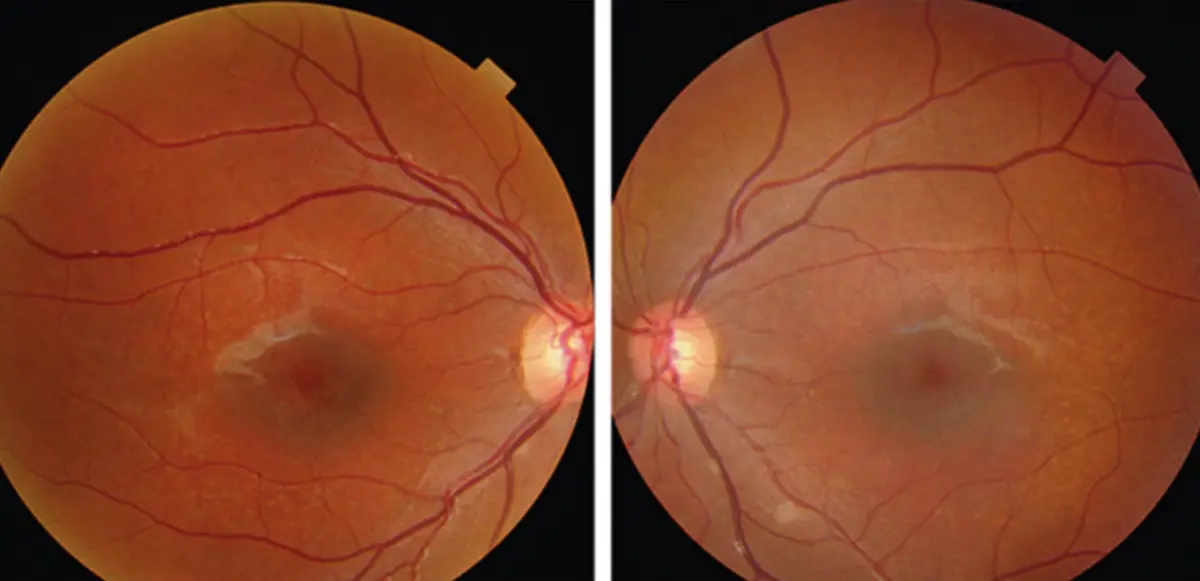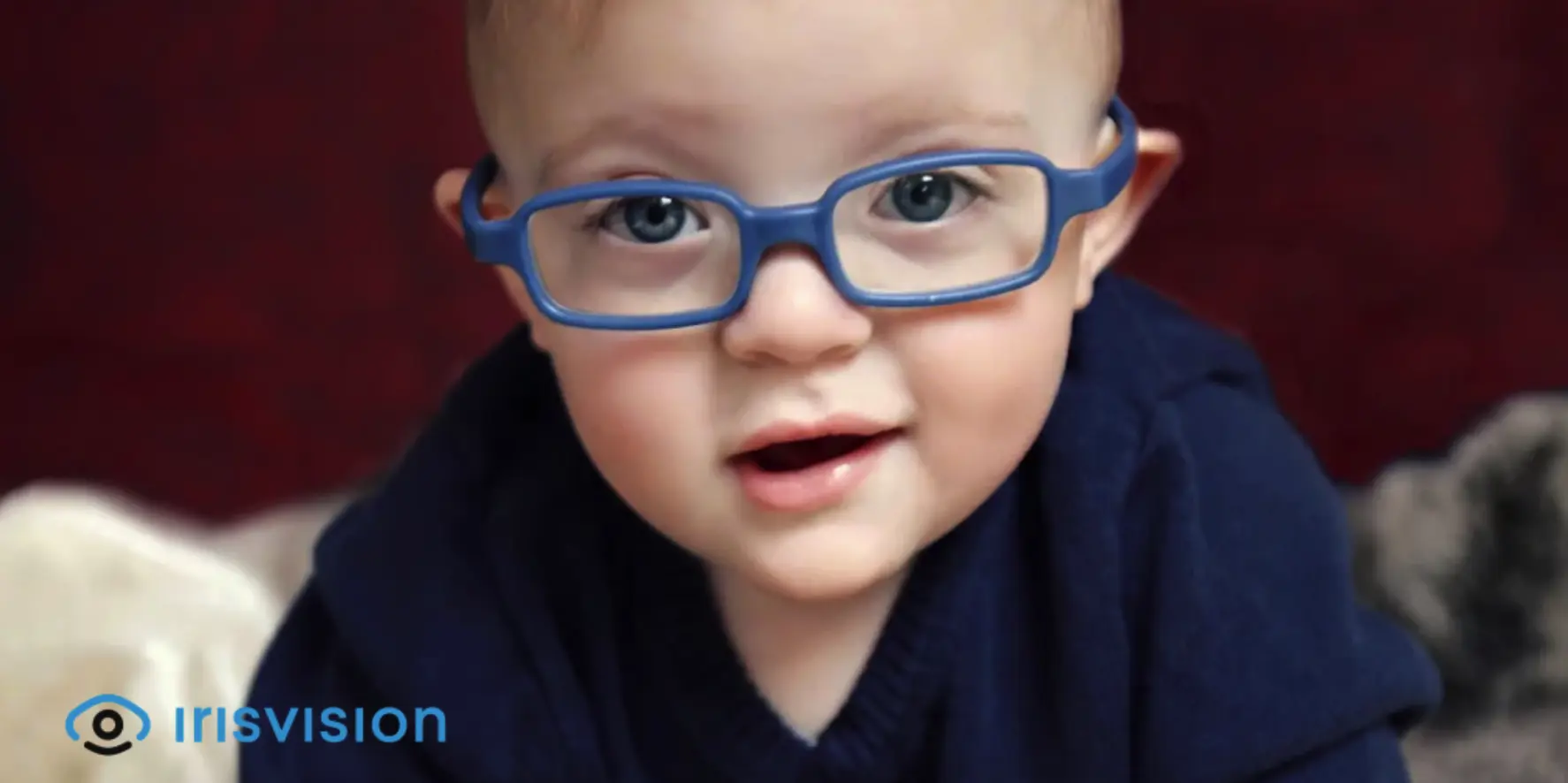
#Live2.0 #Review
Stargardt disease is an inherited form of macular degeneration, one that affects both eyes. It develops and becomes apparent at the early ages of 6 to 12. The usual symptoms of Stargardt are trouble reading, color perception, and central vision loss, mostly leaving the peripheral vision unaffected. As a progressive eye disease, Stargardt disease gets worse with time, causing further vision loss.
The primary cause of Stargardt disease is the ABCA4 gene. This gene takes the potentially toxic substances out of the photoreceptor cells. A mutated gene loses its ability to remove these substances, and they begin to accumulate.
The accumulated substance has a yellowish pigment, and it sits in the cells of the macula, causing vision loss. Known as lipofuscin, the pigment remains after the absorption and breakdown of the damaged blood cells.
ABCA4 gene is a recessive trait. It means that if both parents have the gene mutation, there is a 25% chance of developing the disease.
Another gene, though rare, ELOVL4, can be a cause of Stargardt disease as well, but it is rare. Both ABCA4 and ELOVL4 are responsible for creating proteins that are found in the retina’s light sensing cells.
ELOVL4 helps build long-chain fatty acids, mostly active in the retina as well as in the skin and brain. When mutated, this gene forms clumps and, once they start accumulating, they can interfere with the retinal cells, causing progressive vision loss.

Stargardt disease is not the only reason for low vision in children, but it is the most common inherited form of eye disease.
Every year, more than half a million children suffer from low vision or legal blindness. Children with visual impairment have difficulty reading, playing sports, participating in social events, and recognizing faces.
From birth to approximately four months old, an infant starts adjusting to light and focusing on objects in front of them. From five to eight months, depth perception and facial recognition become part of a child’s visual behavior. From nine to twelve months, hand-eye coordination and gross spatial recognition is demonstrated, as they start crawling. These skills are developed within the first two years of life, allowing a child to explore their environment.
Knowing these normal visual development steps is crucial in detecting signs of low vision in children. Reduced sensitivity to bright lights, delayed or absent eye contact, slowed development of social smile, lack of awareness of one’s own hand, absence of goal-directed hand movements, and inability to fixate on familiar objects such as toys or faces can be early warning signs for parents or pediatricians of low vision in children.
Usually, low vision can be considered when a child appears clumsy or inattentive, yet the true problem lies in their vision. Older children may start to verbalize the symptoms of blurry vision, eye strain, blind spots, or headaches. Other symptoms can be:

Stargardt disease affects everyone differently and is diagnosed at different ages. People with Stargardt are usually asked about how they see. The following are a few examples of how the vision is for people with Stargardt:
Usually, other common forms of macular degeneration are also considered; hence, diagnostic tests for macular degeneration are used. There test can be:
However, the cause of Stargardt disease is diagnosed once an ophthalmologist discovers the elongated yellowish, branching flecks in the retina during a dilated eye exam. A fluorescein angiogram helps confirm the diagnosis. This test involves a dye (fluorescein) being injected into the arm and taking photos of the retina. In the case of Stargardt disease, the camera’s view of the dye is blocked by the substance building up in the retina.
This finding is called the ‘dark choroid’. The lipofuscin not only blocks the camera’s view but also accounts for the yellowish flecks visible on the retina through the ophthalmoscope.
The visual acuity of a person with Stargardt disease ranges from 20/20 to 20/200. By the age of 50, the acuity reaches 20/200 or worse. As the macula is primarily affected, the peripheral vision is minimally affected.
To date, there is no specific treatment for Stargardt disease. Theories are being tested, along with trials on gene therapy and drug therapy, yet nothing is definite.
Doctors often recommend people wear sunglasses in the sun and in places with bright lights. Though there is no conclusive research or clinical trials, it is believed that sunglasses have certain protective benefits, as they prevent further damage to the retina from UV rays.
Gene therapy is being tested as a possible treatment for Stargardt disease. One such trial includes triggering the formation of an ABCR protein, which will replace the defective ones.
Stem cells are another ray of hope as a treatment for Stargardt disease. A study by two American doctors showed that patients with Stargardt disease experienced improved or stabilized vision. Out of the 17 patients, 76.5 percent showed improvement, and 17.6 percent showed no visual decline.
Progress is being made with research on Stargardt disease, yet we don’t have a cure. In addition to the possible treatments for Stargardt disease above, people may limit their Vitamin A consumption to minimize the buildup. Occupational therapy and counseling may also help in adjusting to living with low vision.
Low vision aids can also help people with Stargardt disease. This may help in getting on with daily tasks like using a microwave, looking outside the window, and reading a paper. With the advancements in technology, there are a range of low vision aids, from a simple magnifier to advanced wearable technology.
IrisVision is the latter: a low vision aid that helps with reading, magnification, watching TV, navigation, and various modes for each eye disease type. It’s a wearable, lightweight headset that helps with several eye diseases, including Stargardt disease.
IrisVision Inspire is a smart assistive technology device designed with special softwares lenses that use the remaining vision and amplify it to deliver functional sight. It’s a sleek headset featuring an advanced camera with 30 frames/second resolution and adjustable interpupillary distance. It has a powerful autofocus with near-to-far distance lenses, and a removable eye-guard.
For Stargardt disease, such visual aids are a great help.
One example we have is of Ashley Ezell from Phoenix, Arizona, who was born with Stargardt disease and diagnosed at the age of 12. At some point she was declared legally blind. That didn’t stop her from pursuing a teaching career by memorizing the layout of the school and her classroom, until she was introduced to IrisVision. Normally, her vision was 2200/40 and with IrisVision it is 20/30.
Another successful story is that of the Loebe Family from Phoenix, Arizona. The entire family has a problem with low vision. Of them all, Trish was diagnosed with Stargardt at the age of 9. All the family members, along with Trish, use the IrisVision devices to assist them in carrying out their daily tasks.
IrisVision Inspire provides the breakthrough technology at an affordable price range. The entire headset includes the Inspire headset, a Samsung smartphone, all the hardware that includes a 2-year cellular plan. If it doesn’t suit you, you have the option to return it within 30-days.
Support
See and Connect Today!
IrisVision Global, Inc.
5994 W. Las Positas Blvd, Suite 101
Pleasanton, CA 94588
Email: [email protected]
Support: +1 855 207 6665
Support
See and Connect Today!
IrisVision Global, Inc.
5994 W. Las Positas Blvd, Suite 101
Pleasanton, CA 94588
USA Email: [email protected]
Support: +1 855 207 6665
Support
See and Connect Today!
IrisVision Global, Inc.
5994 W. Las Positas Blvd, Suite 101
Pleasanton, CA 94588
Email: [email protected]
Support: +1 855 207 6665